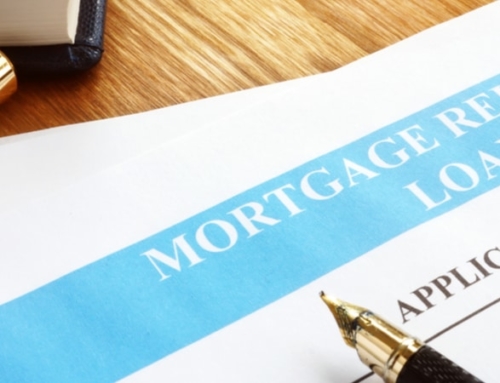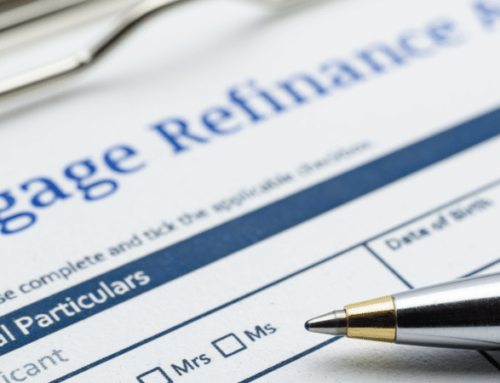I just refinanced.
It’s the fourth time in five years, not including a loan modification that occurred last year (also known as a streamline refinance in some parts of the country). With this refinance, I’ve just bought myself 5 more years at 4.125 percent on a 5/1 adjustable rate mortgage.
I’ll save about $100 per month, and it will take me about 7 months to pay off the closing costs.
Several weeks ago Federal Reserve Bank chairman Alan Greenspan said publicly that using an ARM could save homeowners a whole lot of money. A cry went up in the mortgage industry that the 30-year fixed rate loan is good, too, just in case millions of homeowners were thinking about switching.
But Greenspan is right. Using an ARM instead of a fixed-rate mortgage can save a homeowner thousands of dollars. The trick is, you have to be willing to take a small risk.
The risk you take is that interest rates will eventually rise. ARMs are only fixed for a relatively short period of time (a year, three years, five years, seven years or even 10-years), and then the interest rate is adjusted to meet the benchmark whenever the initial fixed loan term ends.
But over the last 14 years, including all of the 1990s, 30-year mortgage interest rates have mostly been less than 8 percent, according to statistics from the Mortgage Bankers Association of America (MBAA).
The swing in interest rates has been from last year’s historic low of 5.1 percent to a high of about 10 percent in 1990. If you exclude 1990 and 1991, interest rates peaked at 8.42 percent in 1994 and have been at less than 8 percent consistently since (except for a period of a few months in 2000).
What does that mean in terms of saving money? The short answer is that anyone who bet that interest rates would stay low and used an ARM versus a fixed-rate mortgage saved thousands and perhaps even tens of thousands of dollars.
Let’s take a look at how much cash you might have saved.
In general, 1-year ARMs are priced about 2 percentage points less than 30-year fixed rate mortgages. Five-year ARMs are priced about 1 percentage point less than 30-year mortgages.
For example, in 2002, the average 30-year mortgage rate was 6.43 percent. The 1-year ARM rate was an average of 4.62 percent, according to MBAA statistics. The 5/1 ARM average rate fell somewhere in between, around 5.5 percent.
If you got a 30-year mortgage for $200,000 at 6.43 percent, your monthly payment would have been $1,255. After five years of payments, you would have paid out a total of $15,131, of which $3,000 would be principal and $12,131 would be interest. If you kept your mortgage for 30 years, you’d pay out $252,000 in interest over the life of the loan.
Historically speaking, that’s a great deal. In fact, anything under 10 percent was considered a really good deal before 1990. But, you’d have done a lot better using an ARM.
If you got the same $200,000 loan but used a 5-year ARM, your monthly payments would have been fixed for five years at $1,135, or $120 less than with the 30-year fixed rate mortgage. After five years, you would have paid out $13,626, with $3,355 going toward principal and just $10,271 going toward interest.
If you were able to keep the same interest rate over the life of the loan, you’d pay out $208,000 in interest, a savings of $44,000 in interest between the two loans. You’d save $1,860 in interest over five years by using the 5/1 ARM over the 30-year mortgage.
Of course, there’s always the change an ARM will change at the end of five years when the interest rate adjusts. When you gauge the risk, you tend to think about the rate going up to the maximum allowed each year. Most ARMs can go up a maximum of 2 percentage points per year, for a total of 6 percentage points over the life of the loan, although some ARMs have no annual cap and can adjust immediately to the lifetime rate cap).
While that sounds steep, you need to compare how much you’d pay on a 5/1 that adjusts to the maximum versus how much you’d pay on a 30-year fixed rate loan.
If your monthly payment on the $200,000 5/1 ARM at 5.5 percent is $1,135, that would rise to $1,398 per month if the interest rate jumped in year 6 to 7.5 percent. If rates skyrocketed again, and your 5/1 goes up the maximum to 9.5 percent, your monthly payment would rise to $1,681.
With the first jump, your payment would now be $140 per month more than if you had a 30-year fixed rate mortgage. With the second jump, your payment would be $440 more than the fixed-rate loan.
But the savings you’d have had for the first five years would carry you through year 7, which would be the break-even point.
So betting on an ARM comes down to this: You have at least 5 years of guaranteed savings, plus another 2 years to figure out what to do next. Prior to the great refinancing boom, the average homeowner only kept his or her mortgage for 7 years before refinancing. Now, it’s about 18 months.
If you’re going to sell your home or refinance your mortgage before the fixed term is up of your ARM, there’s really no risk at all. Just a whole lot of cash you could be putting in your back pocket.






Leave A Comment